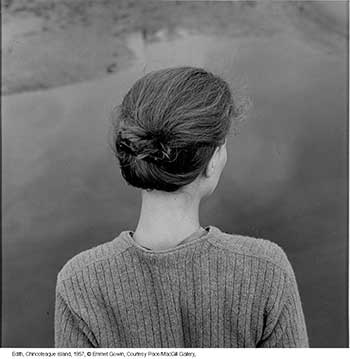 “There are things in your life that only you will see, stories that only you will hear. If you don’t tell them or write them down, if you don’t make the picture, these things will not be seen, these things will not be heard,” says the photographer and teacher Emmet Gowin. One can imagine him saying such a thing to his photo students at Princeton University where he taught for 36 years. Gown through his teaching and work is one of today’s most influential living photographers.
“There are things in your life that only you will see, stories that only you will hear. If you don’t tell them or write them down, if you don’t make the picture, these things will not be seen, these things will not be heard,” says the photographer and teacher Emmet Gowin. One can imagine him saying such a thing to his photo students at Princeton University where he taught for 36 years. Gown through his teaching and work is one of today’s most influential living photographers.
A retrospective of his black and white photographs at the Fondation Henri Cartier Bresson (until July 27, 2014) is a journey from his landmark intimate pictures of his wife, Edith and her family to aerial photographs of ravaged landscapes (nuclear test grounds in Nevada, etc) to a few pictures from his most recent project documenting tropical, nocturnal-moths.
During a recent visit to Paris Gowin spoke at Le Bal. While answering questions about his photo inspirations he recalled that when he was a teenager he saw in a magazine a photo by Ansel Adams of a burned log sprouting new shoots which impressed him that a photo could more than a simple representation and have metaphoric qualities. Gowin began his photographic odyssey in 1961 at the Richmond Professional Institute, where he intended to study painting, but got hooked on photography.
In the 1960s Gowin studied with Harry Callahan at the Rhode Island School of Design, and like Callahan, who photographed his wife Eleanor, Gowin found inspiration in his own wife, Edith. Gowin initially pursued the family images with a 4-by-5-inch view camera. He gradually shifted to a stylized snapshot aesthetic stressing the spontaneous moment. These pictures are now icons and a major reference for students of photography.
The exhibition at HCB includes these pictures along with his lesser known landscapes of strip-minning sites, nuclear sites and large-scale agricultural fields. Not satisfied to rest on past photo successes he continues to explore in a quest to make images that are authentic and engage reality in a meaningful way. Says Gowin “The picture is like a prayer, an offering, and hopefully an opening through which to seek what we don’t know, or already know and should take seriously… All important pictures embody something that we do not yet understand. In the process we collect a few random yet vivid facts that we didn’t know before.”
Emmet Gowin, to July 27, 2014, Fondation Henri Cartier Bresson. Paris.

